Hagia Sophia
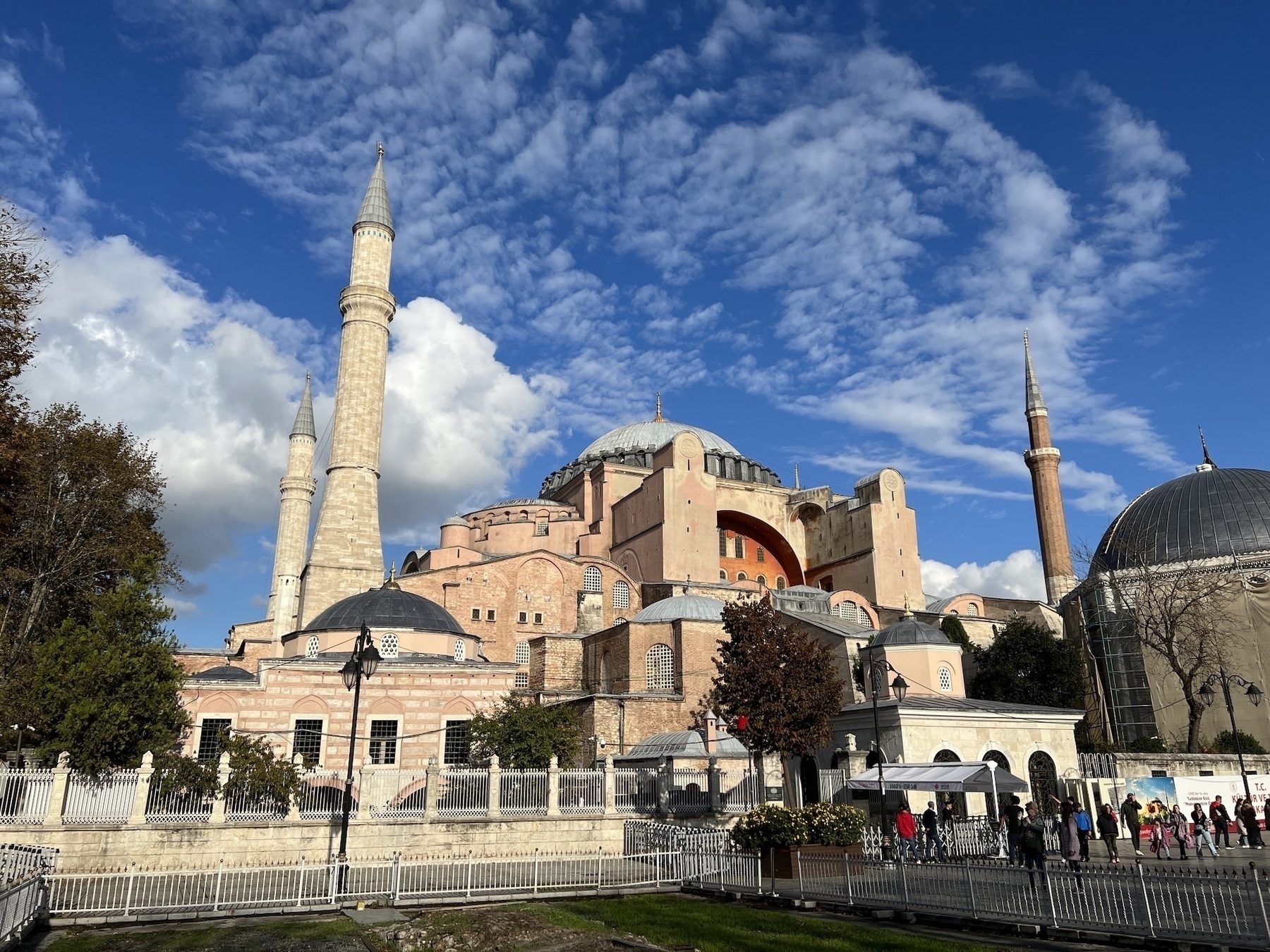
As described in my previous post, Istanbul is a city of layers. Nothing demonstrates this more than one of the gems of the city: the Hagia Sophia.
Built on the site of an earlier Christian church erected in 336 AD by Constantius II (son of the Emperor Constantine) the current building was made in the 532 AD by the Byzantine emperor Justinian I. For a thousand years it was the largest building in the world. Except for a short time as a Catholic church after the Fourth Crusade in the 13th century, the Hagia Sophia stood as a cathedral of the Eastern Orthodox tradition until the Ottomans conquered Constantinople in 1453. Since then the Ayasofya has been a grand mosque until 1935 when Atatürk, in his drive to secularize the newly founded Republic of Turkey, converted it to a museum. Most recently, in a controversial move in 2020, the long-serving conservative president Erdoğan converted it back into a working mosque.
This is the most barebones of history for structure that has been standing — and used — for more than fifteen centuries. The Ayasofya is an excellent symbol of the historical layers of the city of Istanbul, as throughout the centuries it has gained new additions, but with much of its original structure still shining through. I would like to give you just a few examples. Come with me on a short tour!
During my stay in Istanbul I went to the Ayasofya twice since it was so amazing. Both times I approached from the “back”… once coming down from the Topkapi Palace (photos) — which holds such treasures as the Topkapi dagger, the staff of Moses, and the arm of John the Baptist — the other time when a frustrated taxi driver angered by traffic dropped us off in a sidestreet saying merely “You walk from here”.
The Ayasofya stands across the plaza from the famous Blue Mosque, a beautiful built to purpose mosque made in the early 17th century. The Ayasofya in contrast has had so many additions as it changed civilizational hands that it looks more like something from the “lived in” universe of Star Wars.
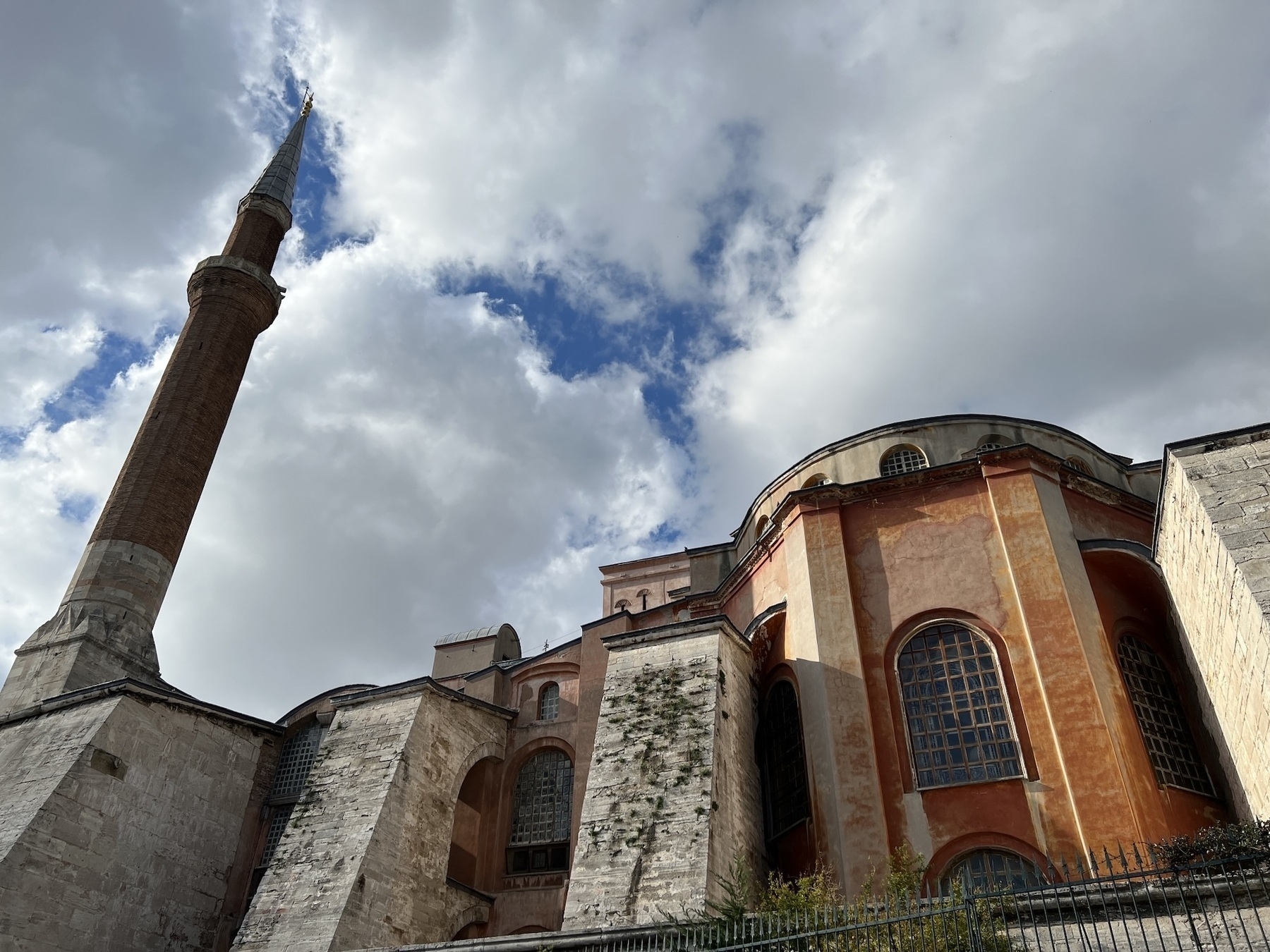
From the outside you can see the red walls of the original church. The massive dome (more on that later) is 32 meters across and so heavy that the church walls have been buckling so later architects installed buttressing to keep the walls standing straight. There are four minarets which were added at various times, one made of red brick, adding to the architectural pastiche.
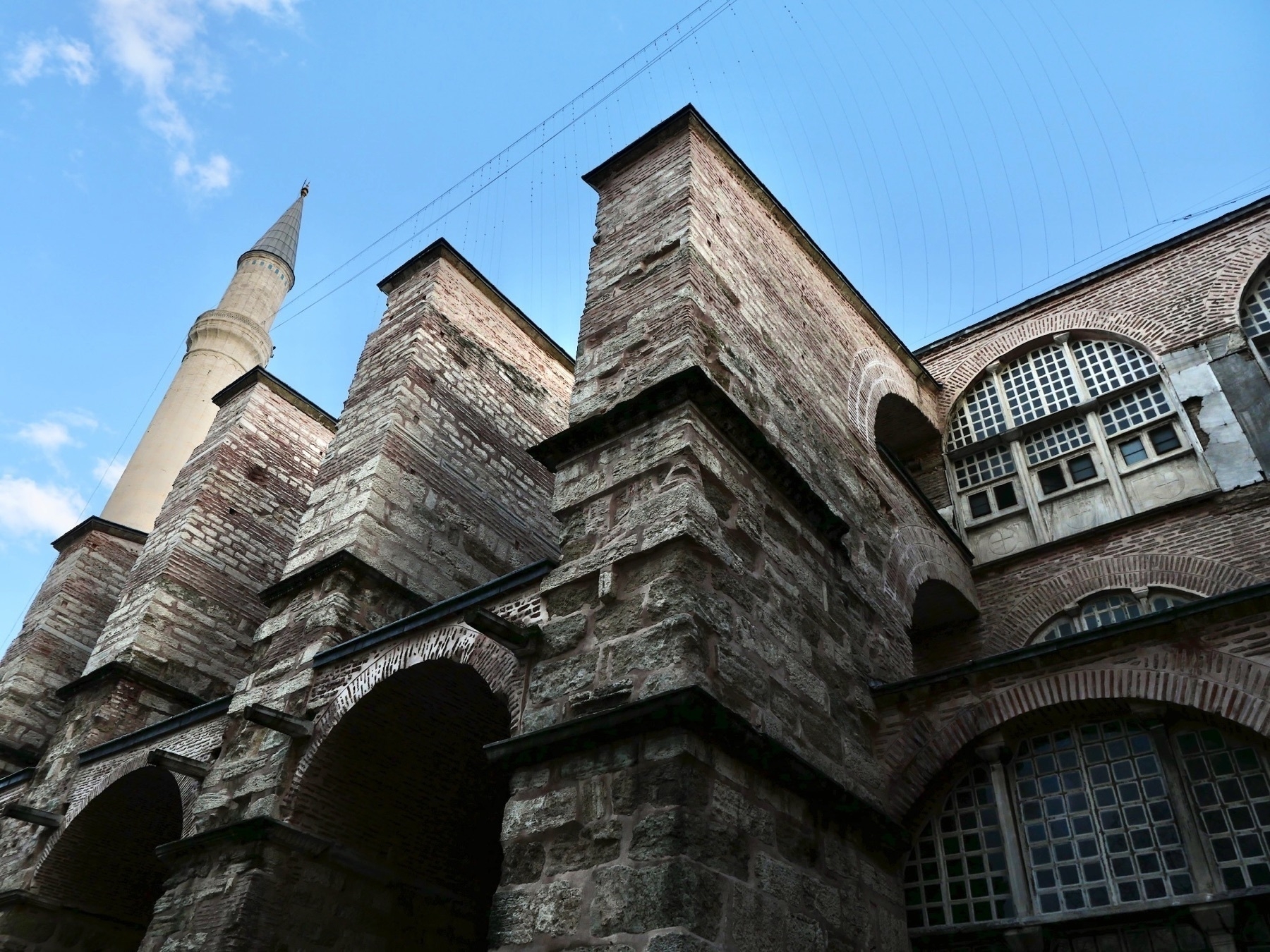
Circling around to the front you will see a line of people out into the plaza. Since the building is once again an operating mosque, five times a day tourists are shuffled out to make way for people doing their daily prayers. The line out front can get quite long as people wait during prayer times, but if you time it right you can basically walk right in. After passing some metal detectors you get a close view of the buttresses before entering the building from the side. In the outer hall you are treated to domed ceilings with golden tiled mosaics. It feels very Byzantine. Shoe lockers line the walls where you can store your footwear before entering the mosque. The marble thresholds have been worn down by the passing feet of millions of petitioners through the centuries, and look like melted butter.
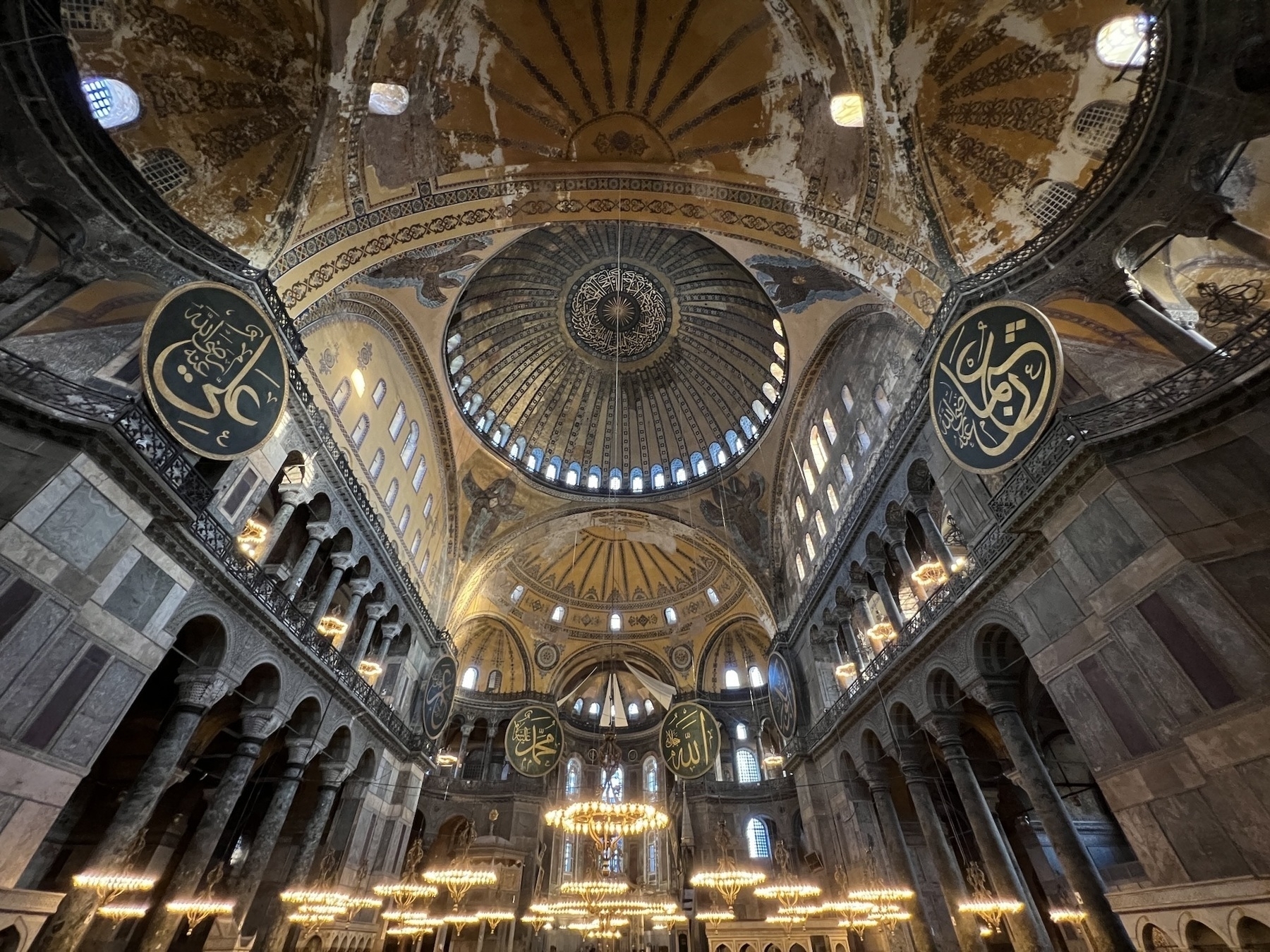
The crowd pushes you along to enter the cavernous building. Large circular chandeliers hang from the vaulting ceiling. Looking up — and everybody is looking up — two semi-domes help to prop up the 32 meter wide main dome which at its height it 55.6 meters above the floor. There are no supporting pillars in the middle of the building, so it feels absolutely huge inside.
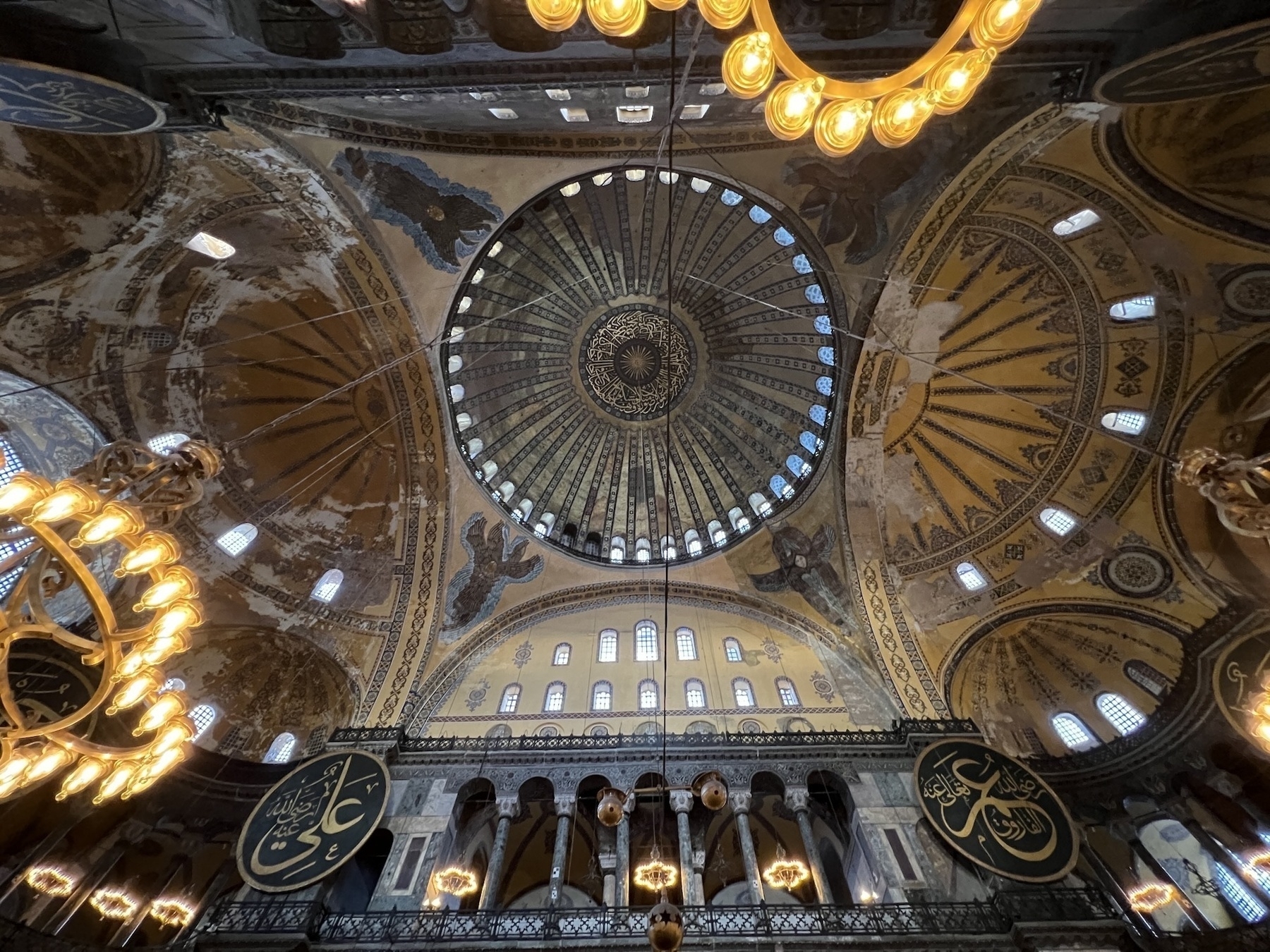
This wide angle shot from inside shows the two semi-domes on the left and right which support the main dome. Below are the pillars of the second floor, which you used to be able to go up into, but no longer. Around the center dome you can also spot the four “biblically accurate” angels who also support the dome. In the Ottoman era the faces of the seraphim were covered with stars, but one has been restored with its face.
Everywhere you go inside people are staring up in awe and taking photos. But there are many other details to look at other than the domed ceiling. The columns were imported from all over the Mediterranean and some have special stories. People sit on the floor and rest their backs against the columns as they gaze upward. But if you look downward, to the lush green carpet you find another asymmetry of time: the lines on the carpet are at an off-angle to the rest of the building. These are the lines that parishioners line up as they pray towards Mecca, which of course the building was not designed to line up with. I mean, it was constructed more than 60 years before the founding of Islam!
There are many, many more details but I hope this gives you a glimpse at not only of the historical significance of the Hagia Sofia, but also as a symbol of the history of Istanbul.
To see more photos and videos of the interior and surrounding area, including the call to prayer from the perfectly symmetrical Blue Mosque, see my album on Flickr.